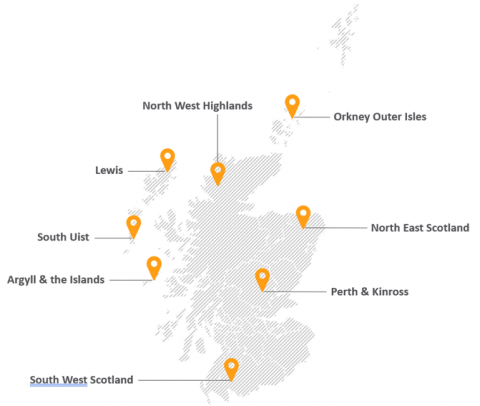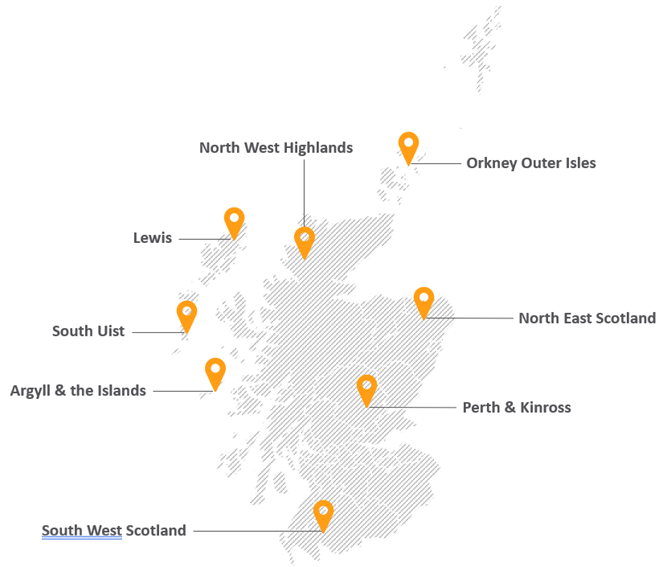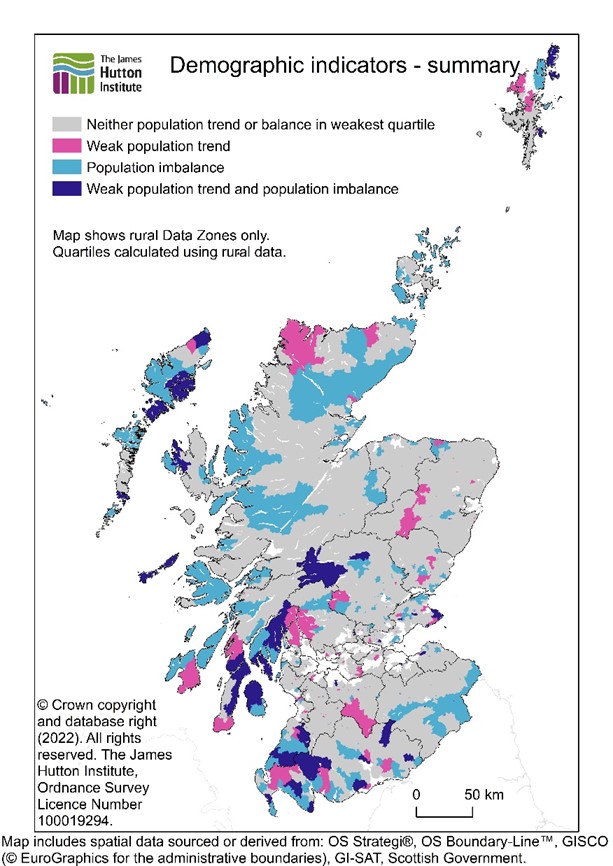- acacia.marshall's Blog
- Log in to post comments

What are we doing?
A vital part of our research is hearing from people living in rural and island places about the challenges they face in their everyday lives, how things are changing, and what they would like to see happen in the future. To this end, we intend to work with eight case study communities across Scotland over the five years of the project, to understand the lived experiences of residents and businesses.
The case studies are settings for data collection, experimental research methods, and exchanging knowledge. We are looking at a range of factors that affect the liveability of rural and island communities and trying to identify ways of addressing challenges that have applicability elsewhere. As well as listening to the experiences of residents and businesses, we want to activate our role as researchers – where there is a call to do so – by putting our research skills to use for the benefit of the case study communities and by linking case studies to policy-makers and other stakeholders to help address challenges. We are not defining what these actions will look like, but rather seeing what emerges from discussions.
We are exploring different concerns in different case studies – such as housing, transport, digitalisation, food security, micro businesses and social innovation – as well as cross-cutting themes such as depopulation, local services, young people, inequalities, community resilience and minority groups. By gathering data about these themes across the case studies, we are aiming to gain a depth of insight into how different challenges manifest for people in diverse rural places, and inform policy about what solutions work best in different situations.
Where are the case studies?
The case studies are in the Argyll Islands, North West Highlands, Orkney Outer Isles, Perth and Kinross, Lewis, South Uist, North East Scotland and South West Scotland (Figure 1).

Figure 1. Case study locations
How did we decide on the case studies?
We spent a lot of time considering where we should focus. First, we drew up some maps showing which parts of rural and island Scotland have:
- Experienced relatively weak population trends, and/or a relatively unbalanced population profile
- Relatively poor access to services
- Relatively low incomes
- Experienced a relatively large negative economic impact of Covid, and/or may experience challenges due to employment change in a net zero transition. Two of these maps are shown in Figure 2.


Figure 2. Two of the maps used in the selection process
The maps helped us to draw up a longlist of areas where we might focus. We then had a workshop and a series of one-to-one conversations with rural and island stakeholders to draw on their knowledge about what has been happening on the ground in these places. Then, we considered the suite of case studies as a whole, which we wanted to represent different types of rural area, have a geographical spread across rural and island Scotland, and include those with a strong track record of community development as well as those in the early stages of working together to address challenges. This process helped us to arrive at a shortlist of potential case studies.
The next step was to speak to representatives of the shortlisted communities to see how they feel about becoming a case study and participating in our research. It’s fair to say that some communities feel over-consulted and somewhat wary while others are keen to get involved; in some places, it has taken time to consider whether and how being a case study could benefit the community. Indeed, this process of figuring out how we can make ourselves useful as researchers is an ongoing one, and we expect that our role will evolve as new challenges arise.
What happens next?
We have undertaken initial visits to most of the case studies (multiple visits, in some cases) and are talking to local groups about current challenges; these discussions are shaping research activities according to the needs of each place. So far we have connected communities with each other to discuss how best to harness the benefits from renewables, and applied for research funding so one community can explore adaptation strategies in the face of climate change; other activities are in development.
We are also conducting interviews with residents and businesses in several of the case studies with a view to improving the evidence base about rural and island communities and economies and are feeding back emerging findings to stakeholders and policy-makers and identifying actions that will help to overcome challenges.
We will be writing about our case study activities as they progress - watch this space for updates!







